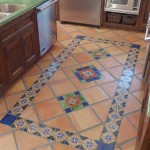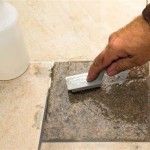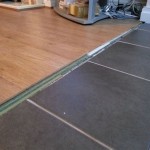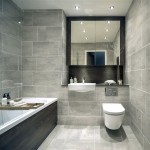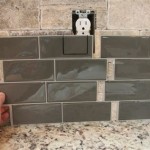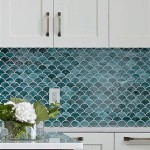Can You Put Tile On Drywall Ceiling In Bathrooms? A Comprehensive Guide
The question of whether tile can be installed on a drywall ceiling in a bathroom is a complex one, involving considerations of weight, moisture, and structural integrity. While technically possible, the viability of such a project depends heavily on several factors, each requiring careful assessment and adherence to best practices. This article will explore these factors in detail, providing a comprehensive guide to understand the feasibility and necessary precautions for tiling a drywall bathroom ceiling.
Drywall, also known as gypsum board or plasterboard, is a common material used for interior walls and ceilings. Its relatively low cost, ease of installation, and smooth surface make it a popular choice. However, drywall is not inherently designed to support heavy loads, especially in environments with high humidity levels like bathrooms. The absorption of moisture can weaken drywall, making it more susceptible to sagging and eventual failure. Therefore, careful preparation and the selection of appropriate materials are paramount when considering tiling a drywall bathroom ceiling.
Weight Considerations: A Critical Factor
The primary concern when tiling a drywall ceiling is the weight of the tile itself. Tile, especially larger format tiles or those made from heavier materials like natural stone, can exert significant downward force on the ceiling structure. Drywall is typically supported by ceiling joists, and the spacing and strength of these joists play a crucial role in determining the load-bearing capacity of the ceiling.
Standard half-inch drywall, commonly used for ceilings, has a limited weight-bearing capacity. Adding tile significantly increases the overall weight, potentially exceeding the drywall's ability to handle the load. This can lead to sagging, cracking, or even complete collapse of the ceiling. The weight of the tile is not the only factor; the adhesive used to attach the tile also contributes to the overall weight.
Before proceeding with any tiling project on a drywall ceiling, it is essential to calculate the total weight per square foot that the ceiling will need to support. This calculation should include the weight of the tile, the adhesive (thin-set mortar), and any grout that will be used. Compare this calculated weight to the maximum load-bearing capacity of the drywall and the ceiling joists. If the calculated weight exceeds the capacity, reinforcing the ceiling structure becomes necessary.
Reinforcement options include adding additional joists, sistering existing joists with new lumber, or installing metal furring channels to distribute the weight more evenly across the ceiling. Consulting with a structural engineer or experienced contractor is highly recommended to determine the most appropriate reinforcement strategy for a given bathroom and tile selection. Ignoring the weight considerations can lead to serious structural problems and potentially hazardous situations.
Moisture Management: Protecting the Drywall
Bathrooms are inherently humid environments due to the presence of showers, baths, and sinks. This high humidity poses a significant challenge for drywall, as it is susceptible to moisture absorption. When drywall absorbs moisture, it can weaken, swell, and become a breeding ground for mold and mildew. This is particularly problematic when tile is installed, as moisture can become trapped behind the tile, accelerating the deterioration of the drywall.
Proper ventilation is crucial for mitigating the risk of moisture damage in a tiled bathroom ceiling. A high-quality exhaust fan, properly sized for the bathroom's square footage, should be installed to effectively remove moisture-laden air. The exhaust fan should be used during and after showers and baths to minimize the amount of moisture that accumulates on the ceiling and walls.
In addition to ventilation, the use of a moisture-resistant membrane is essential. This membrane acts as a barrier between the drywall and the tile, preventing moisture from penetrating the drywall. There are several types of moisture-resistant membranes available, including liquid-applied membranes and sheet membranes. Liquid-applied membranes are applied like paint, creating a seamless, waterproof barrier. Sheet membranes, such as Schluter-KERDI, are adhered to the drywall using thin-set mortar and provide a durable, waterproof surface for tiling.
Choosing the right type of adhesive is also important for moisture management. Opt for a thin-set mortar specifically designed for use in wet environments. These mortars contain additives that resist moisture absorption and prevent the growth of mold and mildew. Ensure the thin-set mortar is compatible with both the tile and the moisture-resistant membrane being used.
Proper sealing of grout lines is another key step in preventing moisture intrusion. Apply a high-quality grout sealer after the grout has cured to create a water-resistant barrier. Reapply the sealer periodically, as recommended by the manufacturer, to maintain its effectiveness. Regular cleaning of the tiled ceiling with a mild, non-abrasive cleaner can also help to prevent the buildup of soap scum and mildew, further protecting the drywall from moisture damage.
Installation Techniques: Ensuring a Secure Bond
Even with proper weight considerations and moisture management strategies in place, the success of a tiled drywall ceiling hinges on proper installation techniques. A poorly installed tile ceiling is prone to cracking, loose tiles, and eventual failure, regardless of the materials used.
Before beginning the tile installation, thoroughly clean the drywall surface to remove any dust, dirt, or debris. Use a damp sponge or cloth to wipe down the ceiling and allow it to dry completely. Priming the drywall with a suitable primer can improve the adhesion of the thin-set mortar. Choose a primer that is compatible with the drywall and the thin-set mortar being used.
Apply the thin-set mortar to the drywall using a notched trowel, creating ridges that will help to bond the tile to the ceiling. The size of the notches on the trowel should be appropriate for the size and type of tile being used. Apply the mortar in small sections to prevent it from drying out before the tile is applied.
Press each tile firmly into the thin-set mortar, ensuring that it is properly aligned and spaced. Use tile spacers to maintain consistent grout lines between the tiles. Periodically check the levelness of the tiles using a level to ensure that the ceiling remains flat and even. Remove any excess thin-set mortar from the grout lines before it dries.
After the thin-set mortar has cured, typically after 24-48 hours, remove the tile spacers and apply the grout. Choose a grout that is specifically designed for use in wet environments and follow the manufacturer's instructions for mixing and application. Use a grout float to press the grout into the grout lines, ensuring that they are completely filled. Wipe away any excess grout from the tile surface with a damp sponge.
Allow the grout to cure completely before sealing it with a grout sealer. Apply the sealer according to the manufacturer's instructions, ensuring that all grout lines are thoroughly sealed. Reapply the sealer periodically, as recommended, to maintain its effectiveness. Proper installation techniques, combined with the use of high-quality materials, will help to ensure a long-lasting and aesthetically pleasing tiled drywall ceiling in the bathroom.
In summary, while tiling a drywall ceiling in a bathroom is possible, it requires careful planning, preparation, and execution. The weight of the tile, moisture management, and proper installation techniques are all critical factors that must be addressed to ensure the success of the project. Consulting with professionals and adhering to best practices are essential for achieving a safe and durable result.

The Tile Journal Of Hamilton In Woodstock Ga

The Tile Journal Of Hamilton In Woodstock Ga

The Tile Journal Of Hamilton In Woodstock Ga

The Tile Journal Of Hamilton In Woodstock Ga

Should You Tile Your Bathroom Ceiling S Emily Henderson Weighs In

Your Complete Design Guide To Diy Floor Ceiling Bathroom Tile Installation In New Jersey Standard

Bathroom Tiles To The Ceiling Yes Or No

The Tile Journal Of Hamilton In Woodstock Ga

Shower Ceiling Ideas And Inspiration For Your Bathroom Hunker

The 6 Best Bathroom Ceiling Materials To Complete Your Makeover Decorative Tiles Inc
Related Posts

